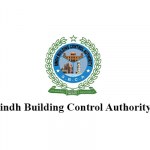Muzaffarabad: The Azad Jammu and Kashmir (AJK) government on Wednesday presented a record-breaking budget worth PKR 310.2 billion for the fiscal year 2025–26 — the largest in the region’s history — with a strong focus on development, education, health, and infrastructure.
The budget was tabled by Finance Minister Abdul Majid Khan in the AJK Legislative Assembly. It includes a PKR 49 billion development outlay, signaling the government’s intent to boost public services, social welfare, and economic growth.
Read: AJK President vows to prioritize Kotli’s development needs
Revenue and Expenditure
The estimated receipts for the year stand at PKR 261.2 billion, with major contributions from:
- Federal variable grant: PKR 149 billion
- Electricity: PKR 19.58 billion
- Inland Revenue: PKR 85 billion
- Water usage charges: PKR 1 billion
- Other receipts from sectors like transport, food, law and order, and industries
The non-development expenditure totals PKR 256.2 billion, covering major sectors such as:
- Education: PKR 52.78 billion
- Health: Rs26.27 billion
- Law and order (Police, Justice, Jails): PKR 15.7 billion
- Pensions: PKR 49 billion
- Communication & Works: PKR 6.7 billion
- Social welfare, agriculture, local government, and more
Capital expenditure for the year has been earmarked at PKR 5 billion.
Development Allocations
The PKR 49 billion development budget includes allocations for key sectors:
- Communication & Works: PKR 15 billion
- Health: PKR 6 billion
- Education: PKR 5 billion
- Local Government & Rural Development: PKR 5 billion
- Energy & Water Resources: PKR 4.8 billion
- Governance & IT: PKR 2.8 billion combined
- Physical Planning & Housing: PKR 2.46 billion
- Agriculture, Livestock, Forestry, Tourism, and Sports also received substantial allocations
The budget also supports the AJK Technical Education and Vocational Training Authority (TEVTA), women development initiatives, and social welfare programs.
Budget Priorities
Finance Minister Khan said the budget reflects the aspirations of the people and the government’s commitment to inclusive growth, improved service delivery, and regional development. The allocations target job creation, social protection, and infrastructure expansion in line with the government’s long-term development goals.







